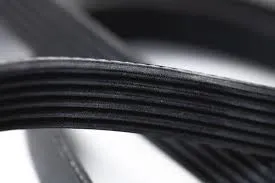- Arabic
- French
- Russian
- Spanish
- Portuguese
- Turkish
- Armenian
- English
- Albanian
- Amharic
- Azerbaijani
- Basque
- Belarusian
- Bengali
- Bosnian
- Bulgarian
- Catalan
- Cebuano
- Corsican
- Croatian
- Czech
- Danish
- Dutch
- Afrikaans
- Esperanto
- Estonian
- Finnish
- Frisian
- Galician
- Georgian
- German
- Greek
- Gujarati
- Haitian Creole
- hausa
- hawaiian
- Hebrew
- Hindi
- Miao
- Hungarian
- Icelandic
- igbo
- Indonesian
- irish
- Italian
- Japanese
- Javanese
- Kannada
- kazakh
- Khmer
- Rwandese
- Korean
- Kurdish
- Kyrgyz
- Lao
- Latin
- Latvian
- Lithuanian
- Luxembourgish
- Macedonian
- Malgashi
- Malay
- Malayalam
- Maltese
- Maori
- Marathi
- Mongolian
- Myanmar
- Nepali
- Norwegian
- Norwegian
- Occitan
- Pashto
- Persian
- Polish
- Punjabi
- Romanian
- Samoan
- Scottish Gaelic
- Serbian
- Sesotho
- Shona
- Sindhi
- Sinhala
- Slovak
- Slovenian
- Somali
- Sundanese
- Swahili
- Swedish
- Tagalog
- Tajik
- Tamil
- Tatar
- Telugu
- Thai
- Turkmen
- Ukrainian
- Urdu
- Uighur
- Uzbek
- Vietnamese
- Welsh
- Bantu
- Yiddish
- Yoruba
- Zulu
ಆಕ್ಟೋ . 18, 2024 06:45 Back to list
Exploring the Benefits and Applications of EPDM Rubber in Various Industries
EPDM Rubber Versatility, Characteristics, and Applications
EPDM rubber, or Ethylene Propylene Diene Monomer rubber, has gained significant popularity in various industrial applications due to its unique properties and versatility. This synthetic rubber is produced through the polymerization of ethylene, propylene, and a diene component, which gives it certain superior qualities compared to other elastomers.
One of the most notable features of EPDM rubber is its exceptional resistance to weathering, ozone, and UV radiation. This makes it an ideal choice for outdoor applications where exposure to harsh environmental conditions is common. Unlike natural rubber and many other synthetic rubbers, EPDM maintains its elasticity and mechanical integrity even with prolonged exposure to sunlight and varying temperatures. As a result, EPDM is widely used in roofing membranes, automotive seals, and weather stripping.
EPDM Rubber Versatility, Characteristics, and Applications
The unique chemical structure of EPDM rubber also imparts remarkable flexibility and durability. It can be formulated to create products that are not only tough but also lightweight and easily molded into various shapes. This flexibility allows manufacturers to produce EPDM products that meet stringent design specifications, ranging from industrial gaskets and hoses to consumer goods like footwear and toys.
epdm rubber

In terms of processing, EPDM rubber can be easily compounded with fillers, plasticizers, and other additives to enhance its properties further. Manufacturers can tailor the formulation to achieve specific performance characteristics, such as improved tensile strength, tear resistance, or elongation. This adaptability makes EPDM a favored choice for companies looking to innovate or improve their products.
EPDM's applications are extensive and span numerous industries. In the automotive industry, it is commonly used for door seals, window seals, and hose components, where its weather and temperature resistance are invaluable. Moreover, EPDM is often utilized in manufacturing roofing membranes for commercial and residential buildings, thanks to its excellent waterproofing capabilities. The roofing industry benefits from EPDM’s flexibility and durability, allowing for long-lasting roof installations that can withstand the elements.
In the construction sector, EPDM is used in sealing compounds, expansion joints, and insulation materials. Its compatibility with a wide range of substrates make it a preferred choice for various construction applications. Additionally, EPDM is employed in HVAC systems as it can withstand a range of environmental conditions while maintaining its physical properties.
The demand for EPDM rubber has been on a steady rise due to its versatile nature and wide range of applications. With increasing awareness regarding sustainable and environmentally friendly products, EPDM has emerged as a leader in the market of synthetic rubber. Manufacturers are also focusing on recycling and sustainable production methods to meet consumers’ growing demand for eco-friendly products without compromising performance.
In conclusion, EPDM rubber stands out as a durable and versatile material suitable for diverse applications across multiple industries. Its unique combination of resistance to weathering, heat, and chemicals, along with its adaptability in formulation and processing, positions it as a valuable resource in modern manufacturing and construction. As industries continue to innovate and seek superior materials, EPDM rubber is likely to remain a key player in the synthetic rubber market for years to come.
-
Korean Auto Parts Timing Belt 24312-37500 For Hyundai/Kia
NewsMar.07,2025
-
7PK2300 90916-T2024 RIBBED BELT POLY V BELT PK BELT
NewsMar.07,2025
-
Chinese Auto Belt Factory 310-2M-22 For BMW/Mercedes-Benz
NewsMar.07,2025
-
Chinese Auto Belt Factory 310-2M-22 For BMW/Mercedes-Benz
NewsMar.07,2025
-
90916-02660 PK Belt 6PK1680 For Toyota
NewsMar.07,2025
-
drive belt serpentine belt
NewsMar.07,2025

